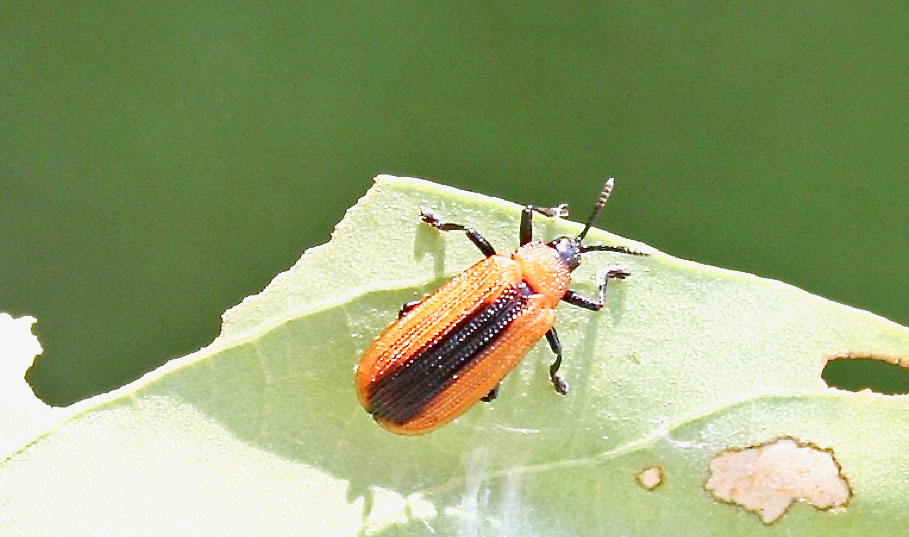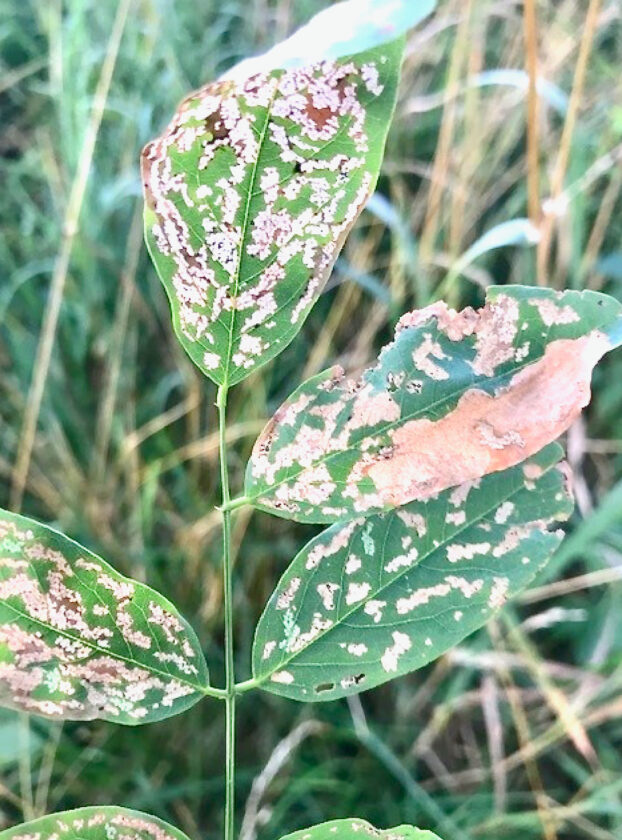The dangers of locust leafminers
- Outbreaks of the locust leafminer occur practically every year, and thousands of black locusts turn brown and are defoliated. (Photo provided)

Outbreaks of the locust leafminer occur practically every year, and thousands of black locusts turn brown and are defoliated. (Photo provided)
On my daily commute from Belpre to Marietta on Ohio 7, I love observing nature growing along the roads and surrounding hillsides. However, the past few weeks I noticed a brown color, almost scorched-like, mixed in with the greenery of trees.
Why are some trees looking scorched, while others are a brilliant beautiful green? The trees which look burnt are locust trees. The culprit turning their pinnately compound leaves a “flaming” brown color is the locust leafminer (Odontota dorsalis), a serious pest of black locust.
This year, the damage caused by the locust leaf miners is heavy, and just not confined on Route 7 between Belpre and Marietta. I have observed damage throughout the county and region, resulting in many calls to the office from concerned citizens about the status of trees and seeking solutions. Heavily infested trees will appear scorched or charred in mid-summer, which we are seeing now. These trees will drop their leaves and can refoliate during the summer. Both the larvae and adults cause damage to the tree’s leaves. The larvae feed as “leafminers,” and the adults feed as skeletonizers.
The adult locust leafminer is a small beetle, around a quarter-inch long. They are elongated and somewhat flattened. The head is black and the wing covers are orange with a broad black or brown stripe down the center. The adult beetles overwinter in bark crevices and under tree and leaf litter. These adults emerge in the spring, about the same time the black locusts are leafing out. They chew holes in the leaves, skeletonizing the lower leaf surfaces.
After the adults mate, the female beetle lays her eggs on the lower surface of the leaves in groups of three to five. The eggs are overlapped (like shingles) and cemented together with excrement.

Upon hatching, the larvae from a given group of eggs bore into a leaf and feed in a common mine, eventually separating and feeding in individual mines, which form irregular blotches.
Adults emerge from the leaf, and the cycle begins again. There are one or two generations of locust leafminer per year. The first is in the spring, and the second begins with the appearance of adults in July
Outbreaks of the locust leafminer occur practically every year, and thousands of black locusts turn brown and are defoliated. Trees that are defoliated seldom die. However, if the damage occurs during a year of drought, or other poor growing conditions, the trees may be killed. To help trees better withstand the effects of defoliation, homeowners should provide adequate water during the summer. Healthy trees can withstand the effects of defoliation.
Although the black locust is the leafminer’s favorite host for the adult beetles, they will occasionally attack honey locust, apple, birch, beech, cherry, elm, oak and hawthorn trees. I have had reports of apple trees being damage by this culprit in the county.
For more questions about the locust leafminer, please contact your local extension office.
Marcus McCartney is the OSU Extension Agriculture and Natural Resources Educator for Washington County. He has been with Extension since 2014. Marcus received both his bachelor’s and master’s degrees from West Virginia University.







